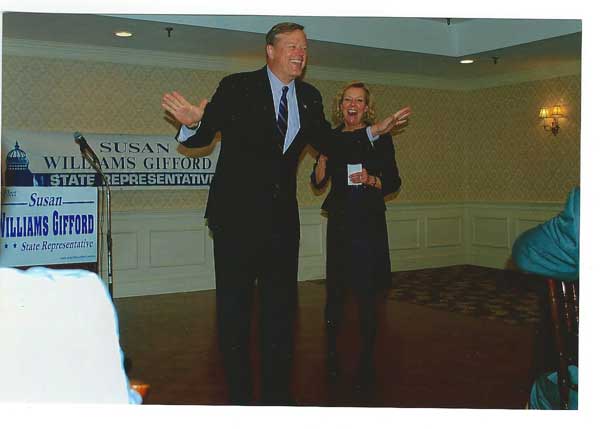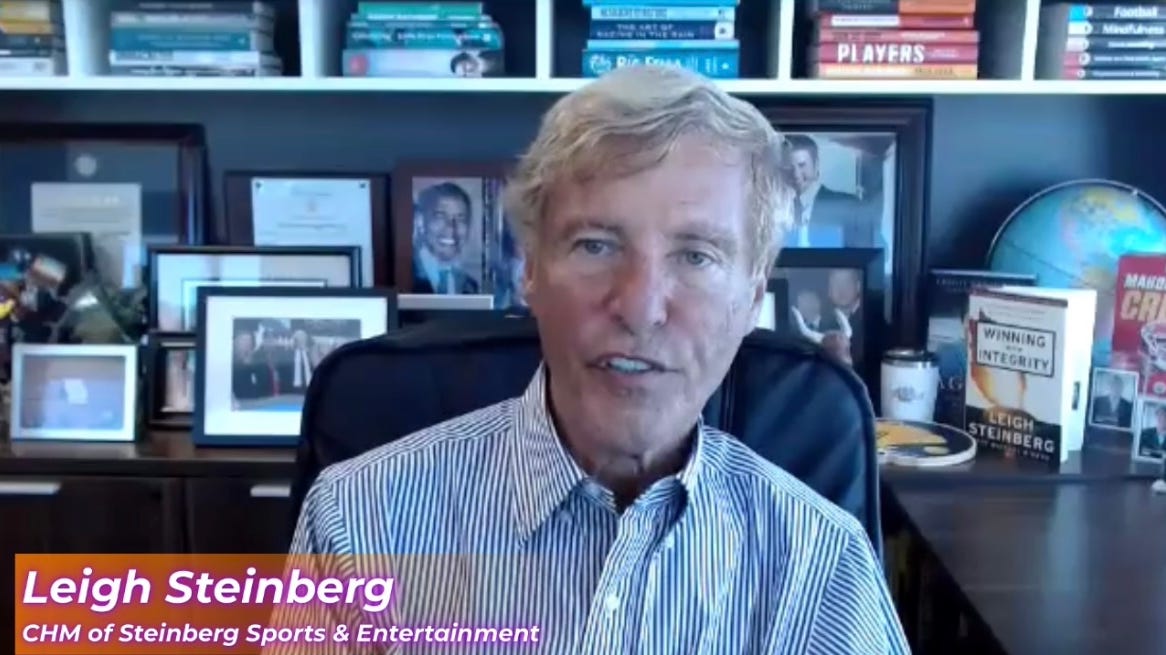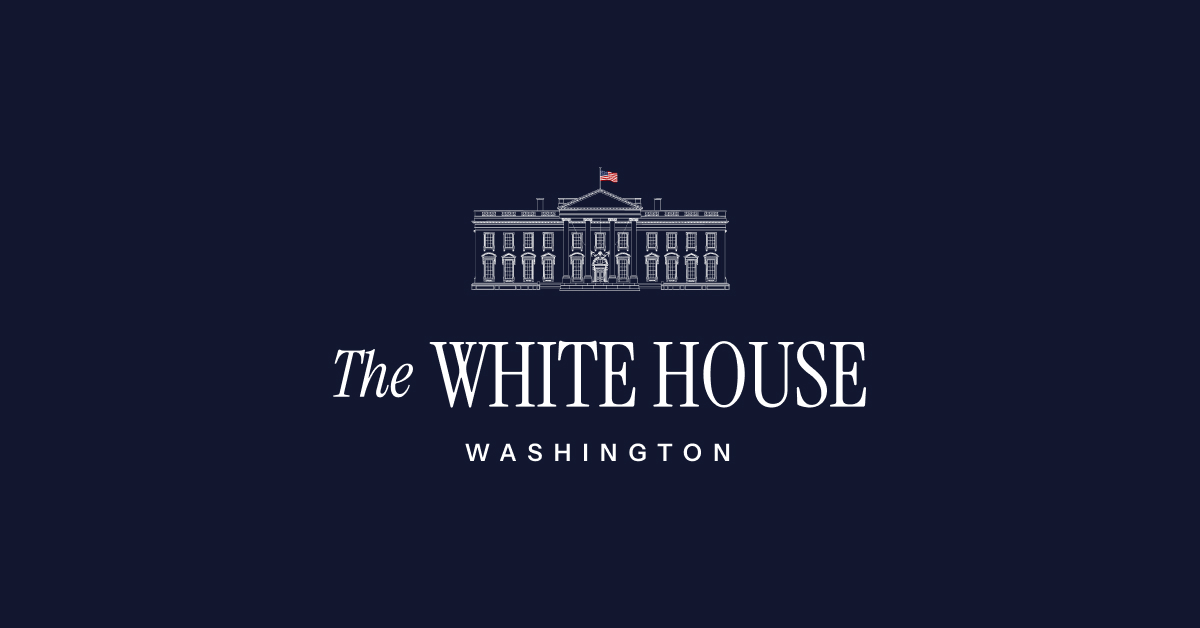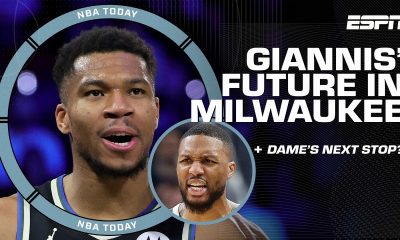On a typical sunny morning in late April, the UCLA Bruins began their last week of spring practice. Almost every other football program in the country had already wrapped up spring ball. But the Bruins, a team trying to replace 42 seniors after a 5-7 season, were still at it.
Quarterbacks who had never thrown a pass in college took reps in a new system. Others were rehabbing injuries on the sidelines. Calling the vibe on the field “low-wattage” felt, that morning, like an oversell.
Khary Darlington, the Bruins’ general manager, paced around the field, talking with folks observing practice. Second-year head coach DeShaun Foster brought him on board this year, one of a dozen new staffers to the program.
At 9:20 a.m., Darlington broke away from those he was chatting up on the sidelines, a grin on his face. He knew a very significant moment for UCLA football was about to happen.
“Excuse me,” Darlington said. “The Eagle has landed.”
And with that, the GM hustled toward the door to the Bruins’ facility to greet some important guests: Nico Iamaleava — UCLA’s biggest get in years — had made his first appearance in Westwood.
The energy at practice immediately changed. The players felt it. Coaches felt it.
Practice did continue, but a trio of defensive backs wandered from the sideline of the drill to see the 6-foot-6 quarterback in the gray jacket and white sweatpants. “Bro, I was just talking about you!” one of them excitedly told Iamaleava.
“You saw a reaction from everybody,” Darlington said. “It was almost like everybody’s back straightened up: ‘Ohhh, shoot, Nico’s here!’ Being a local guy, there are so many people on the team already that he knew, there was this excitement: ‘Wow, we have a real guy on campus that can be a real big difference-maker for us.’”
Darlington, a longtime NFL scout who played a key role in the Carolina Panthers’ evaluation of Cam Newton, has learned quickly that his job is much different from his NFL counterparts.
In the NFL, the role of evaluating talent and a player’s worth is primarily focused on what he brings to the team on the field and as a leader. In college, Darlington said, it’s those things, plus “the currency that it buys you with reputation and the recruiting value that he may have,” and the momentum a player can spark.
And that’s exactly what UCLA is hoping Iamaleava will bring to a rebranding Bruins program.
For Iamaleava, UCLA feels like an ideal fit. That all starts with being close to his family again, he told The Athletic, but also the connection he felt with Foster and the staff. “I really believe in what Coach Fos has going,” he said. “I think he’s building something special here, and I wanted to be a part of it.”
Iamaleava, a Long Beach, Calif., native who grew up 30 miles from UCLA, committed to Tennessee in March 2022 after signing a name, image and likeness deal that paid him more than $8 million over four years. As a sophomore in 2024 — his first season as the Volunteers’ starter — he helped Tennessee to a 10-3 record and a College Football Playoff appearance. He threw for 2,616 yards and 19 touchdowns with five interceptions, plus three running touchdowns.
But Tennessee’s offense wasn’t as explosive as it had been in previous seasons, ranking No. 13 in the SEC in pass plays of 30 yards or longer. The Vols were led by a top-five defense that held its first nine opponents to 19 points or less. Coming off its first Playoff appearance in school history, Tennessee needed to replace the nucleus of last year’s offensive line, as well as leading rusher Dylan Sampson and its top three receivers.
Iamaleava seemed like its one sure thing.
But on April 10, two days before Tennessee’s spring game, On3 reported that Iamaleava and the program were working toward a new contract. The story made public some drama that had been brewing behind the scenes with the 20-year-old QB in Knoxville; there had been chatter for several weeks that Iamaleava might look to move on, sources had told The Athletic.
Iamaleava didn’t attend practice the next day, and the day after that, Vols head coach Josh Heupel announced, on the morning of the spring game, that Tennessee was “moving on” from Iamaleava.
The college personnel field has grown exponentially over the past five years, and with that, so has the rumor mill. Most know when a player is available before he is formally in the transfer portal — because if they don’t, staffs know they’ll probably miss out.
The Bruins staff already knew the Iamaleava family well. Nico’s younger brother, Madden Iamaleava, a four-star quarterback in the 2025 recruiting class, had been committed to UCLA for eight months as a high schooler before signing with Arkansas. Foster, a Southern California native and former UCLA star, also knew people close to the family. Getting good intel on the situation wasn’t hard.
“The football community is small,” Darlington said. “You just start to ask questions, is this thing real or not real? But then, word just starts to get around. It’s nailbiting until you know you’re allowed to officially talk.”
And the Bruins wanted to talk. They desperately needed a quarterback coming out of 2024, a year when they ranked No. 126 in scoring and No. 95 in yards per play. UCLA scored more than 20 points in only two games. UCLA had brought in Appalachian State transfer QB Joey Aguilar last winter in hopes he could spark the offense, but halfway through spring, Foster wasn’t sold on his quarterback’s connection to the receivers and his film study habits. (He would transfer to Tennessee after Iamaleava joined the Bruins.)
So Darlington took a phone call from a close friend of the Iamaleava family, who said if UCLA was interested in having a conversation, he could help facilitate it.
“That’s what kinda gave us the green light to move forward,” Darlington said. “It was right around that time when Nico didn’t attend practice. Everything ramped up there. He said, once this thing pops off, then I can probably introduce you to the people that you need to talk to.”
“I already know a lot of guys on the (Bruins) team, guys I’ve played with and against back in high school and youth days,” said Iamaleava. “Re-connecting with them has been a fun thing.”
Darlington and UCLA’s assistant GM, Steven Price, another longtime former NFL personnel man, came up with 11 different scenarios of how they could make things work to get Iamaleava.
“Some were a little more uncomfortable than others,” Darlington said. “It was, how do we absorb this without compromising the rest of our roster and our team?”
The other tricky part with portal recruits is knowing who else is involved and how aggressive they are going to be. UCLA had heard that Oregon, for example, was out on the chase for Iamaleava. Same with Ohio State and USC, although the Bruins weren’t convinced of that. They weren’t sure about Notre Dame, either.
“There’s no league office (like in the NFL),” Price said. “There’s no one to ask, how legitimate is this? I think having it both ways is the reason behind the 11 scenarios. You’re playing against the (financially ambitious) Texas Tech mentality, and you’re playing against the wanna-be conservative in how you compensate the players mentality.”

Iamaleava and Tennessee’s split was a major moment in college football’s new era. (Steve Roberts / Imagn Images)
In the meantime, reports out of Knoxville were that Iamaleava’s representatives, including his father, Nic (The Athletic had been told in April that Nico does not have an agent), had reached out to Tennessee’s NIL collective in late December to up the quarterback’s pay for 2025 around $4 million, which would be more than the $2.2 million that he was expected to receive. The Athletic reported then that the quarterback was not looking for $4 million.
The fact that UCLA was in the middle of the story seemed like a head-scratcher. It was no secret the Bruins had been slow in the NIL space. Sources familiar with the Bruins’ NIL situation told The Athletic that UCLA’s NIL budget last year was $8 million-$10 million, likely putting the Bruins in the bottom half of Power 4 programs. Foster, though, has been able to generate money, pointing to last season’s three-game winning streak as a turning point.
UCLA bringing in Iamaleava, and the situation with transfer wideout Kaedin Robinson — who made public record his $500,000 NIL deal in an effort to successfully sue the NCAA for eligibility this season — signals that the Bruins, who went 3-6 in league play in their first year in the Big Ten, are now in the game.
“It is what it is,” Foster said. “It’s the game. It’s not just us. The conference that we’re in has won the last two national championships. So for us to compete, we gotta compete.”
And they were going to compete for Iamaleava.
UCLA sought to understand what happened with Iamaleava and Tennessee. The holdout before Tennessee’s spring game was a major moment in a changing sport.
“Today’s landscape of college football is different than what it has been. And, you know, it’s unfortunate, just the situation and where we’re at with Nico,” Heupel said at the time. “I want to thank him for everything that he’s done since he’s gotten here. I said to the guys today, there’s no one that’s bigger than the Power T. And that includes me.”
But, according to Darlington, “Once you peel back the layers, you realize it wasn’t just about (money) at all. This was a big family that did not want to travel all over the country to see their kids play. I think home and family were at the heart of everything.”
“He’s a West Coast guy,” Foster said of Iamaleava. “I just feel like he catches a bad rap just because there was a dollar figure attached to him, and there really wasn’t. If there was, I don’t think we would’ve been the school that they were looking at. Other schools could’ve given him more, for sure.”
Still, UCLA was sensitive to the issue of money. “Money becomes so divisive in the locker room. We did not want that,” said Darlington, adding that the financial details of the Iamaleava situation are “under lock and key.” Media reports that The Athletic believes are credible have pegged Iamaleava’s deal with UCLA at a bit under $2 million.
So on the morning of April 16, when the transfer portal officially opened again, Iamaleava entered his name with a “do not contact” label. By early afternoon, The Athletic reported that he was expected to transfer to UCLA. On April 20, Iamaleava announced that transfer publicly.
Iamaleava said it wasn’t hard to block out the commentary during that time.
“I got my family and the people I love with me,” he said. “That’s all I really worry about. All I can do is go on the field and perform. I’ve never really been that much of a social media guy anyway. I’m not on there as much. Normally, I’m on YouTube or watching movies. I wasn’t really worried.”
Initially, the plan was for his announcement to take place on UCLA’s campus two days earlier at Friday Night Lights, a glitzy open practice the Bruins were staging to attract recruits and alumni. But Foster reconsidered because he thought it might take away from the players already on the roster.
And so Iamaleava made his debut that spring practice morning, flipping the energy of the practice on its head.
Iamaleava’s arrival sparked a flurry of commitments over the next two months. The Bruins added 14 transfers, including Cal’s Jaivian Thomas, one of the top-ranked running backs in the portal. They got commitments from four four-star high school linemen, moving UCLA’s recruiting class up to No. 21 in the country. In the previous two years, UCLA signed three four-stars combined.
Darlington said there was so much interest in playing with Iamaleava, “the discounts started happening. Like if their price-point was at 6, and we were at $400,000, they were willing to do it. We lost out on probably three wide receivers because the school we were competing with came back and doubled the money.”
Since arriving home, Iamaleava has had to scramble to learn a new offense. Foster fired last year’s offensive coordinator Eric Bieniemy and replaced him with Indiana assistant Tino Sunseri. Iamaleava’s younger brother, Madden, has also transferred home to UCLA from Arkansas, causing his own contract issues.
Foster has loved what he’s seen and heard from Iamaleava so far.
“Nico’s arm talent is crazy, and to be 6-6, he’s very athletic,” Foster said. “He also has such composure. He’s very similar to Tua (Tagovailoa) personality-wise; he’s reserved but a leader. I think being home and being around these kids that he’s known has helped him too.”
“I want to bring championships back to Westwood,” said Iamaleava. “I know every guy in the locker room believes that. We’ve got a chip on our shoulder.”
(Photo: Keith Birmingham / MediaNews Group / Pasadena Star-News via Getty Images)




























































